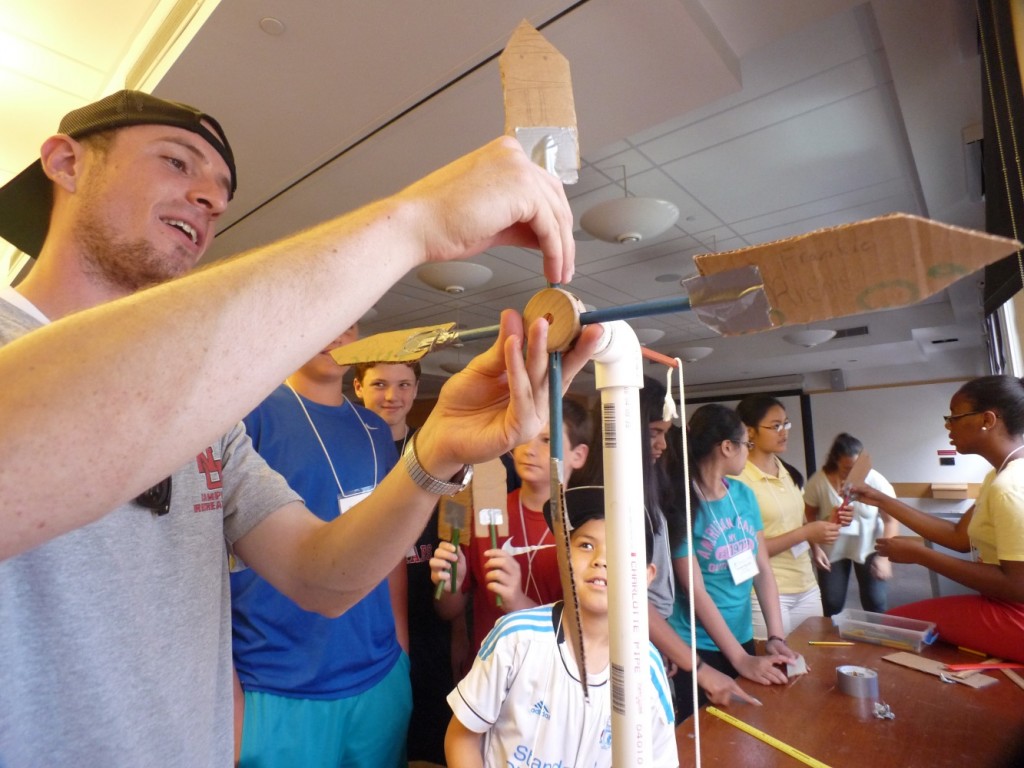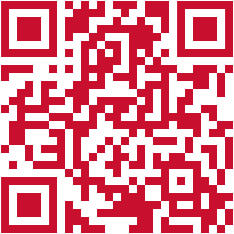Wind Turbines
90 Minutes | 3rd – 8th Grades
 This activity provides an introduction to the sources of renewable energy, primarily focusing on wind power. A presentation will discuss how a wind turbine functions and the benefits and the consequences of building wind turbines in New England. Students will then be engaged in working with their own wind turbines; in small groups of two to four students they will create blades to maximize the efficiency of their turbines. The blades are fit to the Center for STEM Education’s wind turbines, which are used to either generate electricity via a motor, or lift a weight (box of crayons) via a drive shaft. Both models can be used to calculate the amount of watts generated by the students’ blades and the speed at which the turbine generates mechanical energy. By adjusting the size (area) of the blades, the shape, angle, and length of arm (radius), students can analyze which designs work most efficiently.
This activity provides an introduction to the sources of renewable energy, primarily focusing on wind power. A presentation will discuss how a wind turbine functions and the benefits and the consequences of building wind turbines in New England. Students will then be engaged in working with their own wind turbines; in small groups of two to four students they will create blades to maximize the efficiency of their turbines. The blades are fit to the Center for STEM Education’s wind turbines, which are used to either generate electricity via a motor, or lift a weight (box of crayons) via a drive shaft. Both models can be used to calculate the amount of watts generated by the students’ blades and the speed at which the turbine generates mechanical energy. By adjusting the size (area) of the blades, the shape, angle, and length of arm (radius), students can analyze which designs work most efficiently.
Students will design their turbines with the engineering design process in mind. They will need to brainstorm their ideas and make decisions based on observation and analysis. Students will be able to redesign and modify their existing blades to increase efficiency if time permits.
This activity has highly variable range of levels of intricacy, and can be conducted very effectively with any range of students.
Lesson Plan:
Wind Turbine Lesson Plan
Presentation:
Wind Turbines Prezi
Wind Turbines Prezi – Updated
Wind Turbines Data Collection Excel
(Note: Edit white fields only, as grey fields are formulas)
Standards:
- Earth and Space Sciences:
- 4-ESS3-1. Obtain information to describe that energy and fuels humans use are derived from natural resources and that some energy and fuel sources are renewable and some are not.
- Physical Sciences
- 4-PS3-2. Make observations to show that energy can be transferred from place to place by sound, light, heat, and electric currents.
- 4-PS3-4. Apply scientific principles of energy and motion to test and refine a device that converts kinetic energy to electrical energy or uses stored energy to cause motion or produce light or sound.
- 7.MS-PS3-1. Construct and interpret data and graphs to describe the relationships among kinetic energy, mass, and speed of an object.
- Technology/Engineering
- 4.3-5-ETS1-3. Plan and carry out tests of one or more design features of a given model or prototype in which variables are controlled and failure points are considered to identify which features need to be improved. Apply the results of tests to redesign a model or prototype
- 7.MS-ETS1-2. Evaluate competing solutions to a given design problem using a decision matrix to determine how well each meets the criteria and constraints of the problem. Use a model of each solution to evaluate how variations in one or more design features, including size, shape, weight, or cost, may affect the function or effectiveness of the solution.
- 7.MS-ETS1-4. Generate and analyze data from iterative testing and modification of a proposed object, tool, or process to optimize the object, tool, or process for its intended purpose.
- 7.MS-ETS1-7(MA). Construct a prototype of a solution to a given design problem.

